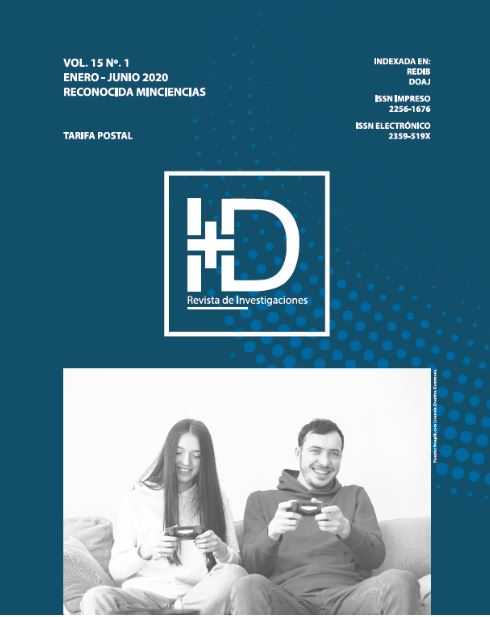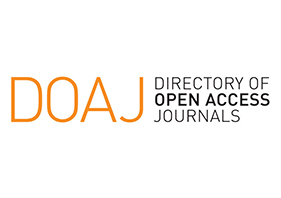Current industrial design methodologies for locomotive functional diversity
DOI:
https://doi.org/10.33304/revinv.v15n1-2020011Keywords:
Technical aids, industrial design, diversity, inclusion, methodologiesAbstract
This document presents a review of the existing methodologies in industrial design for the implementation of Technical Aid (TA) for people with locomotive functional diversity. The origin of the term diversity is documented and the different methodologies that develop products of this type are stated. Furthermore, emphasis is placed on the importance of the creative nature that users have during the project process, as well as its impact on sustainability in the use of these objects. This article highlights the inclusion not only as an indispensable parameter for the creation of objects for diversity, but also the inclusion of the user before, during and after any design project that seeks a change in how the design is conceived within the disciplinary community of industrial design.Downloads
References
Adirón, F. (2005). ¿Qué es la inclusión? La diversidad como valor. Ministerio de educación, Republica del Perú, 4.
Alexander, C. (2018). A Pattern Language: Towns, Buildings, Construction. Oxford University Press.
Alonso López, F. (2002). La Accesibilidad en España: Libro verde diagnóstico y bases para un plan integral de supresión de barreras. Ministerio de Trabajo y Asuntos Sociales, Madrid. (1ra edición).1-341.
Aragall, F., Benenti, B., Ferrer, J., Fort, J. M., Hernández, J.,
Merodio, J. R., … Pol, E. (2012). Libro Blanco del Diseño para Todos en la Universidad. IMSERSO, Fundación ONCE, Coordinadora del Diseño para Todas las Personas en España.
Beecher, V., & Paquet, V. (2005). Survey instrument for the universal design of consumer products. Applied Ergonomics, 36(3), 363-372. https://doi.org/10.1016/j.apergo.2004.10.014
Bendixen, K., & Benktzon, M. (2015). Design for All in Scandinavia–A strong concept. Applied Ergonomics, 46, 248-257. https://doi.org/10.1016/j.apergo.2013.03.004
Buchanan, R. (1992). Wicked Problems in Design Thinking. Design Issues, 8(2), 5-21. https://doi.org/10.2307/1511637
Buchanan, R. (2001). Design Research and the New Learning. Design Issues, 17(4), 3-23. https://doi.org/10.1162/07479360152681056
Carr, K., Weir, P. L., Azar, D., & Azar, N. R. (2013). Universal Design: A Step Toward Successful Aging. Journal of Aging Research, 2013, 1-8. https://doi.org/10.1155/2013/324624
Demirbilek, O., & Demirkan, H. (2004). Universal product design involving elderly users: A participatory design model. Applied Ergonomics, 35(4), 361-370. https://doi.org/10.1016/j.apergo.2004.03.003
Clarkson, P. J., Waller, S., & Cardoso, C. (2015). Approaches to estimating user exclusion. Applied Ergonomics, 46, 304-310. https://doi.org/10.1016/j.apergo.2013.03.001
Ferreira, M. A. (2010). De la minus-valía a la diversidad funcional: un nuevo marco teórico-metodológico. Política y sociedad, 47(1), 45-65.
Ferruzca, M. (2015). Aproximaciones para entender el diseño en el siglo XXI. Universidad Autónoma Metropolitana.
Gacitúa, E., Sojo, C., Davis, S. H., & World Bank, (2000). Exclusión social y reducción de la pobreza en América Latina y Caribe. (1. ed), Washington, D.C: FLACSO, sede Costa Rica
Gonzalez, G. (2017). Diseño inclusivo y universal. Recuperado de http://www.rldiseno.com/diseno-inclusivo-universal/
Guzmán, M. F., Pereira, L. F., Castellanos, C. A., & Ortiz, N. J. (2013). Instrumento para evaluación de la accesibilidad con criterios de diseño universal. Revista Virtual Universidad Católica del Norte, 2(39), 143-151. Recuperado de https://www.redalyc.org/pdf/1942/194227509012.pdf
Jones, J. C. (1978). Métodos de diseño (2da ed.). Ediciones Gustavo Gili.
Keates, S., & Clarkson, P. J. (2003). Countering design exclusion: Bridging the gap between usability and accessibility. Universal Access in the Information Society, 2(3), 215-225. https://doi.org/10.1007/s10209-003-0059-5
Lyotard, J. F. (1979). La condition postmodeme: Rapport sur le savoir. Paris Minuit, 109.
Mace, R. L. (1985). Universal design, barrier free environments for everyone. Los Angeles: Designers West.
Manzini, E., & Cullars, J. (1992). Prometheus of the Everyday: The Ecology of the Artificial and the Designer's Responsability, Design Issues, 9(1), 5-20.
Munari, B., & Rodríguez, C. (1983). ¿Cómo nacen los objetos?: Apuntes para una metodología proyectual. Barcelona: Gustavo Gili.
National Disability Authority (2014). Annual Report 2014. Recuperado de http://nda.ie/Publications/Others/National-Disability-Authority-Annual-Reports/Annual-Report-2014.html
Norman, D. (2010). Why Design Education Must Change. core77, 11, 26. Recuperado de, https://www.core77.com//posts/17993/Why-Design-Education-Must-Change
Norman, D. A. (2005). El diseño emocional: Por qué nos gustan (o no) los objetos cotidianos. (Vol 58). Grupo Planeta (GBS).
Pattison, M., & Stedmon, A. W. (2006). Inclusive design and human factors: Designing mobile phones for older users. PsychNology Journal, 4(3), 267-284.
Rodríguez, G. (1989). MANUAL DE DISENO INDUSTRIAL; curso básico UAM-A (3.a ed.). Naucalpan, Edo. De México: Gustavo Gili, S.A. de C.V., México.
Saavedra, A. A. (2001). Discapacidad: Exclusión / Inclusión. Revista Mad, (5). https://doi.org/10.5354/rmad.v0i5.14826
Saravia, M. (2000). La cuarta dimensión del objeto: Una perspectiva sociológica del diseño. Revista de Estudios Sociales, (06), 90-93.
Vásquez, J. J., Hernández, B., & Triana, N. Y. (2012). Diseño de sistemas de productos. Acta Agronómica, 61(15), 70-71.












